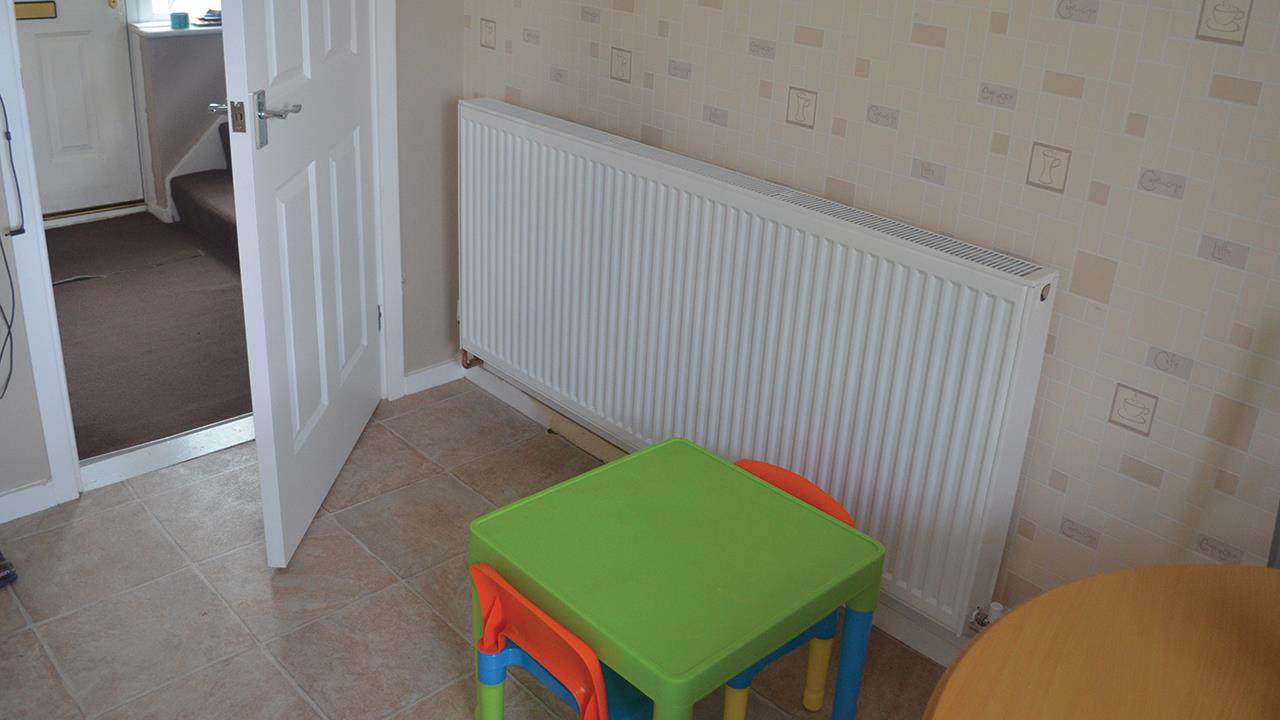

The need for effective solutions to work with low temperature heating systems, such as ground source and air source heat pumps, has given the heating sector a challenge, but it’s one it has risen to. Installers and specifiers are currently looking hard at how to best heat new and existing homes, as legislation changes to move heating away from traditional fossil fuel boilers.
Radiators have developed markedly over the past 10 years, with the arrival of a range of new types of radiator including a number of special application products. Ones that offer additional robustness in certain applications, that offer additional rust resistance in areas of high humidity, or are ‘safe to touch’, aka low surface temperature radiators, which improve safety for elderly, young, and vulnerable people, and are already widely used by social housing providers in sheltered and extra care developments.
And it’s in this vein of responding to specific requirements that a range of solutions aimed at meeting the needs of low temperature heating systems, such as heat pumps, have been developed.
This has involved larger radiators, vertical radiators, and the development of K3 radiators – three panels and three fins on a radiator footprint that is scarcely larger than a traditional K2 design. These provide a significantly larger metal area to allow for an increase in heat radiated and convected from radiators, and work in either newbuild or existing homes.
It’s vital that radiators are ‘fit for the future’ – able to continue providing the levels of heat required from lower temperature heating systems in homes.
A development in Swindon illustrates perfectly how heat pumps and radiators can operate happily together if the radiators are sized correctly at the outset.
Kennedy Drive is part of social housing provider Stonewater’s housing portfolio. Working closely with contractor CCS in Swindon, Stonewater carried out a survey on 55 properties – a mix from one bedroom flats to four bedroom houses – and decided that they were prime for the replacement of the existing electric heating systems and inefficient storage heaters with new air source heat pumps paired with efficient modern radiators from Stelrad.
Craig Shepherd at CCS managed the project. He said: “We’ve been involved in this project from day one and we’re well into delivering the new heating systems for the residents on this estate. We’ve installed a range of Samsung air source heat pumps and paired these with Stelrad Compact radiators, and feedback so far has been excellent.
“I think it’s fair to say the tenants were reassured when we told them that the heating would be via radiators – something they understood and welcomed – there was a feeling that if traditional radiators that they knew about were paired with the heat pumps, their homes would be reliably heated when they needed it and that has proved to be the case.”
Greater Manchester offers a similar success story, where radiators have been paired with ground source heat pumps by Southway Housing Trust. Again, Compact radiators from Stelrad offered part of that familiar feel for residents. While the ‘driver’ of the heating system is a shared loop ground source heat pump that has 12 boreholes drilled deep into the ground alongside the new building, each of the 106 apartments in Gorton Mill House has its own heat pump in a cupboard with a 220l stored hot water cylinder – and most residents will not even be aware that their home is not using a traditional heating system.
Paul Maidment from Southway Housing Trust said: “We are keen to provide equipment in our homes that are most acceptable to the demographic of our tenants and we have thought this through very carefully.
“One major outcome of this was that we decided we wanted to utilise modern, efficient radiators to share the heat around our homes, because nowadays radiators are aesthetically pleasing and can be part of the décor rather than simply heat sharing appliances.
“They are a familiar technology to most of our residents and, moving into a new home with us, they will feel immediately comforted by the fact that even if the driver of the heating system is new, modern technology, it all looks and feels the same as the heating systems they have had in their homes before.”
If you'd like to keep up-to-date with the latest developments in the heating and plumbing industry, why not subscribe to our weekly newsletters? Just click the button below and you can ensure all the latest industry news and new product information lands in your inbox every week.